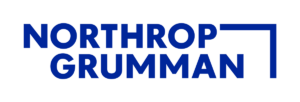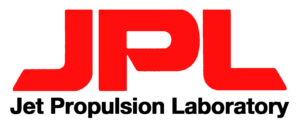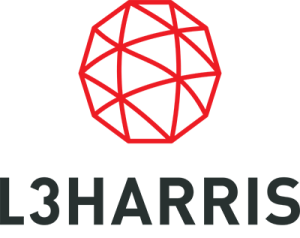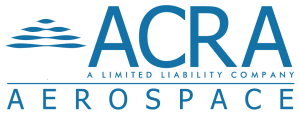How to Redefine Executive Retention Strategies for 2025

Retaining top executive talent has become a critical challenge for organizations aiming to thrive in 2025’s competitive landscape. The evolving nature of leadership roles, coupled with heightened competition, demands a reimagined approach to retention. Partnering with an experienced executive search firm can help organizations align retention strategies with broader goals, ensuring sustainable growth and cultivating long-term leadership success.
Understanding Executive Retention in 2025
The complexities of retaining executives in 2025 require organizations to go beyond conventional strategies. This section explores the critical factors influencing executive retention, setting the stage for actionable solutions.
Key Challenges in Retaining Top Talent
Several challenges make retaining executives a strategic priority:
- Increased Demand for Leadership Talent
A growing demand for skilled leaders has intensified competition across industries. Companies must differentiate themselves with unique value propositions, such as growth opportunities and a strong organizational culture. - Shifting Priorities and Expectations
Executives are prioritizing work-life balance, flexibility, and meaningful work. Companies must align their offerings with these expectations to remain attractive to leadership talent.
Trends Shaping Executive Retention
Emerging trends are reshaping how organizations retain their top executives:
- Globalization and Executive Mobility
Remote work has expanded opportunities for leaders to seek roles globally. Companies must offer compelling reasons to stay, including competitive compensation and cultural alignment. - Remote and Hybrid Work Models
Flexibility is now a baseline expectation. Organizations must ensure engagement through structured communication, collaborative tools, and inclusive leadership practices. - Values-Driven Leadership
Executives increasingly prefer organizations that reflect their values, such as sustainability and diversity. Tangible evidence of these commitments fosters alignment and loyalty.
Building a Culture of Leadership Development
A culture that promotes leadership development is essential for retaining top executives. Organizations that invest in growth opportunities for their leaders demonstrate a commitment to long-term success and resilience.
Providing Continuous Learning Opportunities
To empower executives to excel, companies should:
- Tailor Leadership Development Programs
Create personalized programs targeting strengths and growth areas. Incorporate training on industry trends and decision-making techniques. - Encourage Cross-Functional Mentorship
Facilitate mentorship across departments to expand executives’ understanding of organizational dynamics and foster collaboration. - Offer Global Leadership Workshops
Enable leaders to participate in industry-specific conferences and workshops, fostering professional networks and thought leadership.
Encouraging Long-Term Career Pathways
Clear advancement pathways signal to executives that their contributions are valued and their future is secure. Defining transparent promotion criteria and aligning them with organizational objectives creates a sense of purpose and enhances motivation and loyalty among team members. Additionally, well-structured succession planning prioritizes internal talent for leadership roles, fostering trust within the organization. This approach ensures continuity during transitions and reinforces the organization’s commitment to professional growth and stability.
Tailored Incentive Structures
Incentive structures must balance immediate motivators with long-term rewards to retain top talent effectively:
- Design Compensation Packages Aligned with Contributions
Incorporate performance-based bonuses and equity-based incentives that reflect executives’ impact on organizational success. - Introduce Non-Monetary Incentives
Offer personalized recognition, high-visibility projects, and access to professional growth opportunities to reinforce their value.
Prioritizing Work-Life Integration for Executives
Work-life integration is becoming a critical focus for retaining top leadership talent. Executives face immense pressure in their roles, often at the expense of personal well-being.
By prioritizing initiatives that support balance and integration, organizations not only enhance productivity but also foster loyalty and job satisfaction. This section explores actionable strategies to help companies create environments where leaders can thrive professionally and personally.
Flexibility in Leadership Roles
Flexibility is a cornerstone of work-life integration. Executives with greater control over their schedules are better equipped to balance the demands of their roles with personal commitments.
Implementing adaptable policies demonstrates an organization’s commitment to its leaders’ holistic well-being. Here’s how flexibility can be effectively integrated into leadership roles:
- Flexible scheduling allows executives to adjust their working hours to accommodate personal priorities, such as family commitments or personal development. This approach fosters a supportive work environment without compromising performance and ensures that productivity remains a key focus.
- Shifting the focus from clocked hours to outcomes emphasizes results-driven leadership. Organizations can create a more agile and engaged workforce by evaluating performance based on achieved goals rather than time spent.
- Remote work, where appropriate, further enhances flexibility. Roles that do not require constant on-site presence can leverage secure technologies like VPNs, collaboration platforms, and virtual meeting software to maintain seamless productivity and engagement from any location.
- Custom schedules tailored to align with individual professional objectives and personal needs can empower executives to perform at their best. Organizations can create a framework for transparent discussions around workload distribution to ensure performance targets remain on track while supporting leaders’ priorities.
By building a culture that values flexibility, companies position themselves as forward-thinking executive search firms that genuinely care about their leadership teams.
Wellness and Mental Health Initiatives
Wellness is integral to retaining executives in demanding roles. Leaders who feel supported in maintaining their physical, emotional, and mental health are more likely to stay committed to their organizations. Proactive wellness initiatives signal that the company values its leaders as individuals, not just employees.
- Executive Wellness Programs
Design wellness programs specifically tailored for high-performing executives. These could include personalized fitness plans, access to nutritionists, or stress management workshops. Provide memberships or discounts for wellness services such as gyms, yoga studios, or mindfulness apps to promote a healthier lifestyle. - Encourage Open Dialogue About Mental Health
Normalize discussions around mental health by creating safe spaces for executives to share their experiences without fear of judgment or stigma. Train leadership teams to identify signs of burnout or stress and provide support mechanisms that prioritize recovery and resilience. - Integrate Well-Being into Leadership Expectations
Make wellness a priority within leadership development programs, teaching executives to manage their well-being as a critical component of their role. Include wellness metrics as part of performance reviews to reinforce the importance of self-care in achieving long-term success.
Prioritizing work-life integration and wellness is essential in today’s leadership landscape. These strategies not only help executives maintain a healthy balance but also enhance their performance and commitment. Companies that embrace these initiatives demonstrate their dedication to creating sustainable leadership environments, positioning themselves among top executive search firms that value and retain exceptional talent.
Aligning Executive Goals with Organizational Vision
Retention strategies succeed when executives perceive their personal ambitions as directly contributing to organizational success. Aligning these goals creates a shared sense of purpose, fostering deeper engagement, loyalty, and a commitment to long-term achievements. Organizations must actively bridge the gap between individual aspirations and company objectives to nurture sustainable leadership.
Transparent Communication of Organizational Objectives
Clear and consistent communication is the cornerstone of alignment between leadership and organizational goals. When executives have a strong grasp of the company’s mission, vision, and strategic direction, they can better align their efforts and feel a stronger sense of ownership in the organization’s success.
- Engage Executives in Strategic Planning
Invite executives to participate in high-level planning sessions to create a sense of ownership over organizational goals. Encourage open discussions about challenges, opportunities, and strategies, giving leaders a platform to voice their insights and contribute to the vision. - Provide Clarity on Objectives
Break down both short-term and long-term goals to ensure alignment at every stage of the company’s journey. Use visual tools, such as dashboards or strategic roadmaps, to make organizational objectives more tangible and accessible. - Foster Two-Way Communication
Regularly solicit feedback from executives about company strategies and their alignment with personal goals. Create a culture of transparency where leaders feel empowered to discuss misalignments or suggest adjustments for mutual benefit.
When executives feel involved and informed, they are more likely to stay engaged and dedicated to driving the organization’s success. This approach positions organizations as leaders in offering meaningful executive search services and fostering enduring leadership partnerships.
Tailored Incentive Structures
Motivating executives goes beyond salary. Well-crafted incentive structures that acknowledge individual contributions while aligning with company performance can significantly improve retention. These incentives should be personalized to meet the diverse aspirations of leadership talent.
- Design Compensation Packages That Reflect Contributions
Tie a portion of executive compensation to specific performance metrics, such as revenue growth, market share expansion, or successful project completions. Offer equity-based incentives like stock options, enabling leaders to share in the company’s long-term success. - Introduce Non-Monetary Incentives
Implement recognition programs that celebrate executive achievements in impactful ways, such as public accolades or awards. Provide opportunities for executives to lead high-visibility projects or initiatives that align with their personal interests and passions. - Customize Rewards for Personal and Professional Growth
Support leadership development with access to exclusive training programs, global conferences, or mentorship opportunities. Offer perks like sabbaticals, personal coaching, or contributions toward causes that align with an executive’s values.
Aligning executive goals with organizational vision is a dynamic process that fosters mutual growth and success. Transparent communication ensures leaders understand and contribute to the company’s objectives, while tailored incentives strengthen their commitment and satisfaction. This holistic approach not only enhances retention but also reinforces an organization’s reputation as one of the top executive search firms that prioritizes meaningful and lasting leadership connections.
Redefining Retention for Sustainable Leadership
2025 demands organizations rethink traditional retention practices to meet the evolving needs of executives. By prioritizing alignment between personal goals, organizational vision, and cutting-edge tools, companies can not only retain top talent but also cultivate leaders who propel their business forward.
At BOB Search, we specialize in helping organizations navigate these challenges. Our tailored executive search services ensure that the leaders you hire are not only the right fit for today but also invested in the future of your organization. Contact BOB Search today to redefine your leadership retention strategies and ensure sustainable success.


























